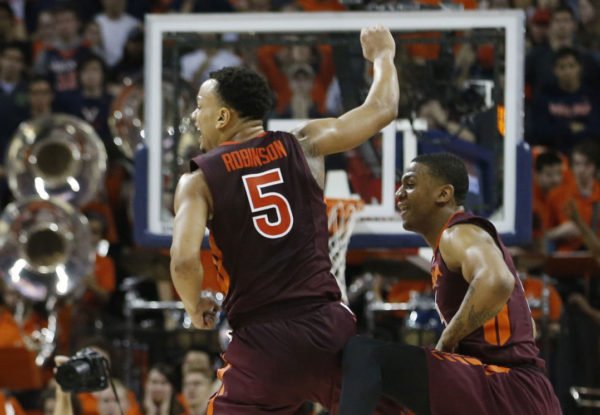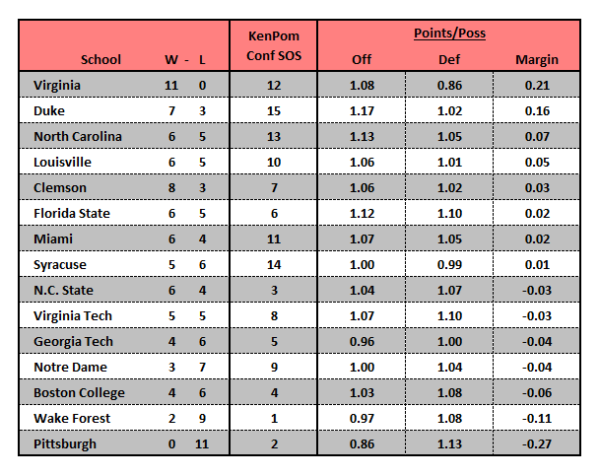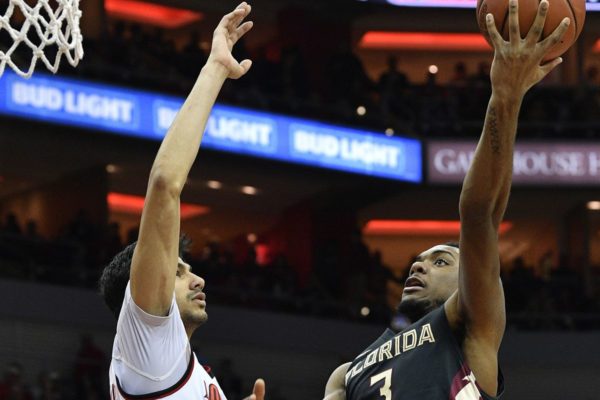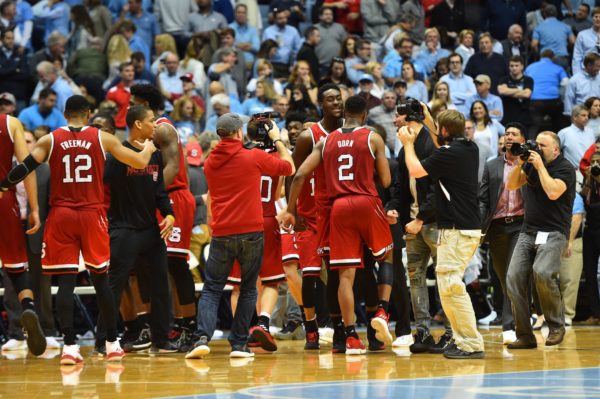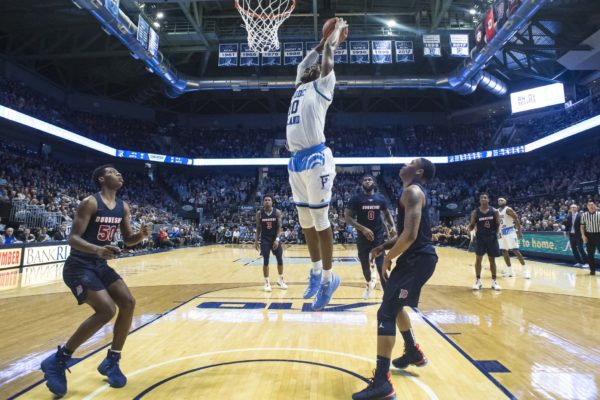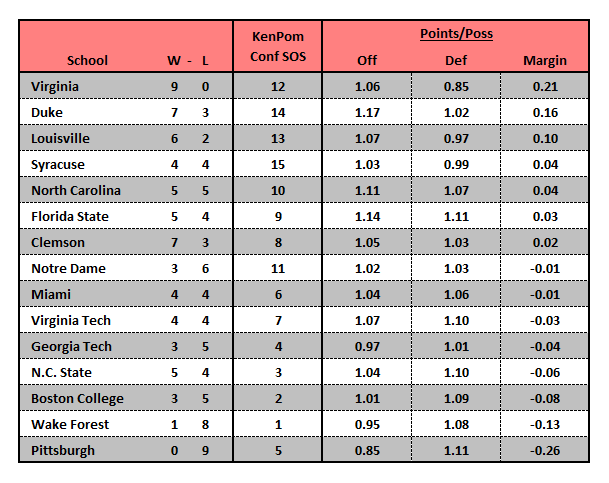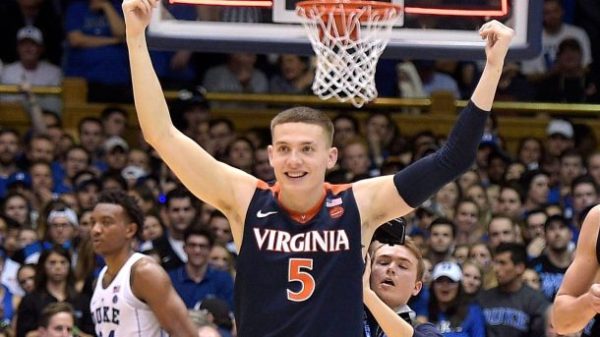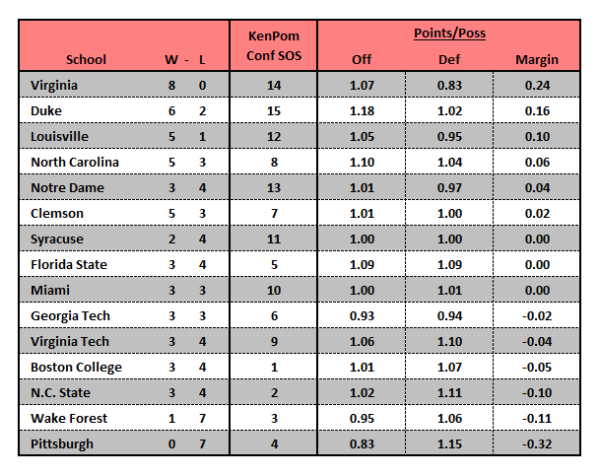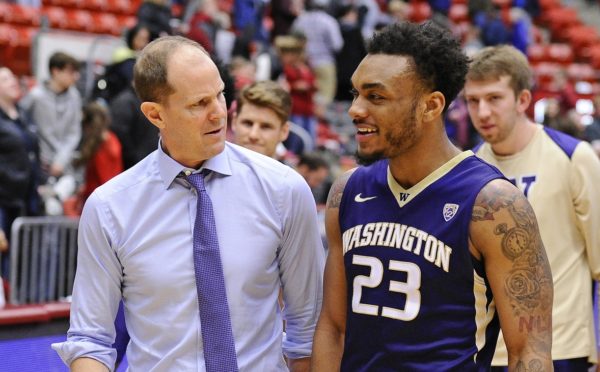Posted by Brad Jenkins (@bradjenk) on January 18th, 2018
With approximately one-third of conference play now in the books, it’s time to take a look inside the ACC numbers. This is the first edition of our weekly view at the current ACC standings with a focus on which teams are playing better or worse than their conference records may initially indicate. We will also delve into some advanced metrics to share a few interesting notes on teams, statistics and trends around the conference. Finally, we will forecast how the final ACC standings may look given current efficiency margins, and what that may mean for teams’ ultimate postseason aspirations.
Note: All numbers are current for games played through Tuesday, January 16.
Current Standings

Boasting a large lead in points per possession margin (PPM) to go along with an undefeated record, Virginia clearly looks like the ACC’s top squad to date. And what is it with Josh Pastner? For the second consecutive year, Georgia Tech is off to a surprisingly good start in league play after a woeful non-conference performance. It isn’t odd to see some striking differences in win-loss records versus PPM performances this early in conference play, but that is not the case so far this year — the current PPM numbers match up pretty well with existing ACC standings.
Advanced Stat of the Week: 3FG% Defense
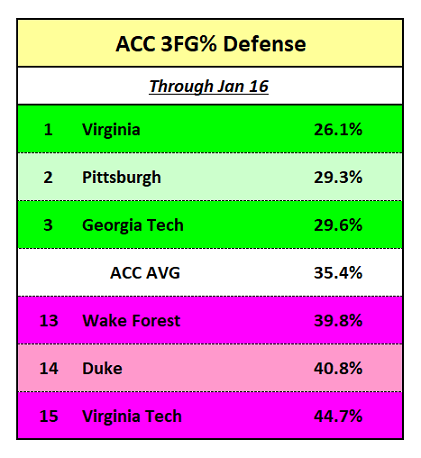
One of the things we like to look at early in league play is to identify which teams have experienced both good and bad fortune with their opponents’ performance. A useful metric for this is opponents’ three-point field goal percentage. Although defenses have some role to play in limiting wide-open looks, it is the offense that for the most part controls accuracy from deep. So when a team’s opponents are hitting threes at an extremely high or low rate over a small sample size, we can expect a regression to the mean to occur down the line. With this in mind, expect Virginia Tech’s defense to look better once its opponents cool down from three-point land, much like Duke’s defense has correspondingly improved lately. In their first three ACC contests (two losses), the Blue Devils were blitzed from deep to the tune of a combined 48.6 percent. But during its current three-game winning streak, Duke’s opponents have made just 32.9 percent from long-range. Likewise, expect Virginia’s vaunted defense to look a bit more vulnerable once the other side sinks a few more threes against them.
As a whole, the ACC is attempting more three-pointers than ever (37.1% 3FG rate in ACC play), but making fewer of them than a year ago. After a record-setting accuracy rate of 37.2 percent in 2017, the league is sinking 35.4 percent of its deep tries this conference season. That number is almost identical to the NCAA average of 35.1 percent nationally, so we should expect the ACC’s success rate from deep to remain pretty close to its current pace while individual team defensive three-point percentage normalizes.
Future Forecast
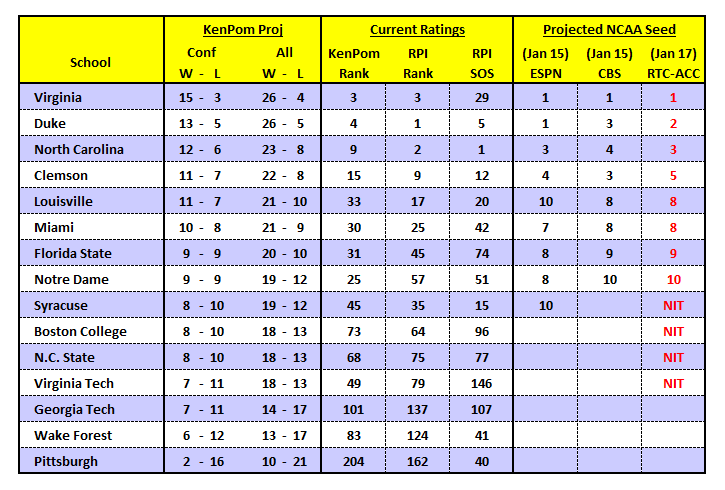
The above table shows predicted order of finish with final regular season records based on KenPom’s current win probabilities for each team. Also included are a few comparative rankings that are mentioned frequently when evaluating NCAA Tournament potential, as well as projections from two bracketology experts — ESPN‘s Joe Lunardi and CBS Sports‘ Jerry Palm. Note that while they project the field as if it was to be named tomorrow, we make our projections based on the final KenPom projected records.
It’s clear that the ACC is not as strong at the top as it was a year ago when the league offered six schools that were seeded #5 or higher. Interestingly, the ACC looks particularly strong in the RPI and normally that results in being awarded seeds that appear higher than deserved — using computer power ratings and opinion poll rankings. But with the Selection Committee’s stated desire to modernize its criteria for selection and seeding, will high RPI metrics still drive its decision-making? If the RPI’s influence is in fact lessened this year, it could hurt the NCAA’s chances for the bulging middle of the ACC — the five schools projected with either eight or nine wins.
| acc, feature, microsites
| Tagged: 3-point defense, acc, boston college, clemson, duke, florida state, georgia tech, louisville, miami, n.c. state, ncaa bids, ncaa seed, north carolina, notre dame, pittsburgh, syracuse, virginia, virginia tech, wake forest
Share this story
